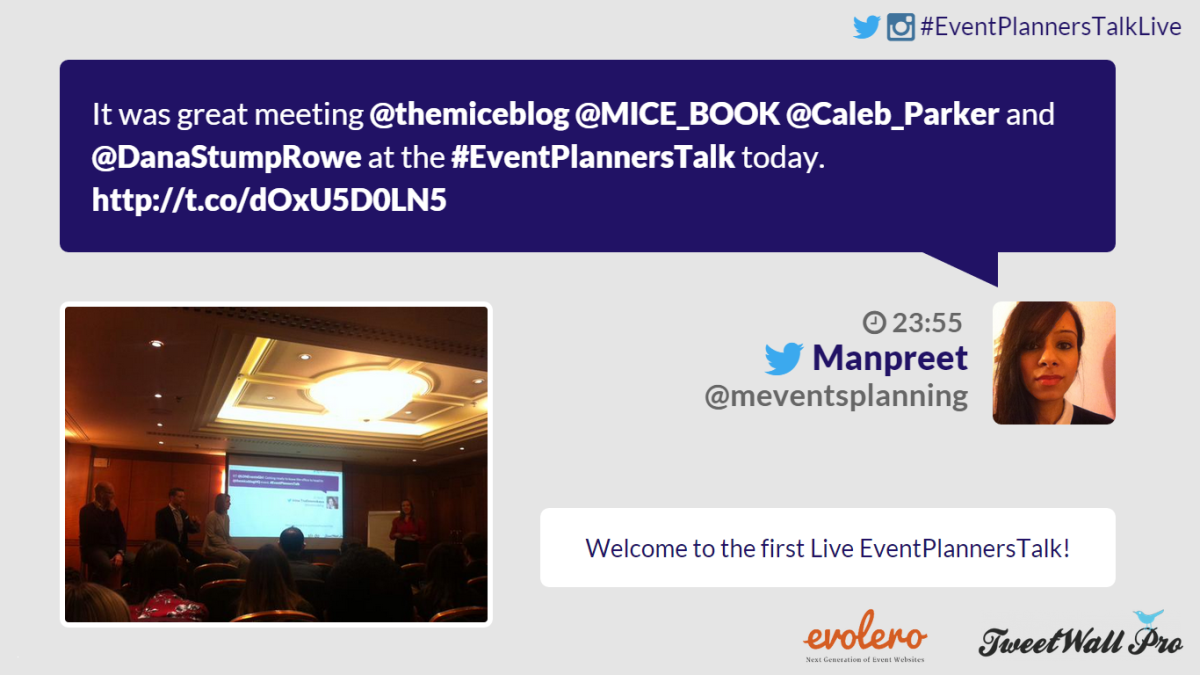In June, I attended the leading digital economy business festival, CEBIT, in Hannover. One of my favourite sessions was “Influencer marketing: the biggest marketing shift of the decade”. The expert panel gave in-depth insights, supported by good examples, drawing on their own experiences. Recently, I decided to watch it again, and at the same time thought I would recap the session for you as well. So here we go.
The session was moderated by Jan Homann, founder and CEO at blogfoster. Speakers included Daniel Pannrucker, managing director at The Story Lab, Dr. Peter Opdemom, managing director at congstar GmbH, and Hans Piechatzek, managing director at move elevator GmbH, and vice president of the German Marketing Association.
The panel began by addressing the state of influencer marketing in Germany, using the growing interest among members of the German Marketing Association in this topic as an example. According to Piechatzek, members have noticed that consumers are shifting their attention from print to digital, with consumers under 20 years old spending (on average) three hours per day on social media. As a result, marketing professionals who want to reach their target audience—those who spend so much time on social media—need to explore new ways of reaching this audience.
Companies, big and small, feel they must do something about this new shift to online, however, they do not know how. There is a high level of uncertainty among the smaller players, and these small to medium-size companies, regional and local (as opposed to multinationals) are still exploring the best methods of implementation. This creates more questions than answers.
Don’t want to be the first-mover?
Opdemom discussed congstar’s marketing strategy, as they had chosen not to be the first mover with influencer marketing. As a mobile network provider offering a value for money service, congstar GmbH also has a marking budget representing this brand proposition. As a result, going all-in with influencer marketing as a first mover was not the right thing for them to do. Instead, they chose to wait, observe, and learn from the mistakes of others. As a next step, they began to learn what is the best fit for their brand. Opdemom added that to be able to evaluate success, companies need the ability to compare and measure results. These results will then set a benchmark for the future.
According to Daniel Pannrucker (whose company produces and distributes entertainment content), influencer marketing has three advantages. First, it helps companies reach their target audience. Second, it helps companies develop new products, and third, with the help of influencers, it is possible to look at data and recognise future trends (influencers are trendsetters).
At first, influencer marketing was strongly focused on PR, partly within social media departments. After some time, companies noticed that banners were no longer delivering the desired outcomes, while at the same time influencer marketing activities were proving to be effective. As a result, companies started to consider whether they needed influencer marketing in the media mix.
The challenge for influencer marketing is that it is often measured with classic Key Performance Indicators (KPIs) (for example, comparing it with the results of a TV spot advert). However, these two do not represent the real comparison. It is good practice to create a comparison for “old school” clients, however “trained” customers understand the fundamental differences between these activities, and that they cannot be compared to evaluate marketing success. As soon as a client has some data to compare, to see what works and what does not, which creates trusts, resulting in a budget shift.
Pannrucker continued that there are two “budget pots”. For big campaigns, the budget comes from media departments, whilst for smaller campaigns it comes from the PR and marketing departments.
So, does influencer marketing needs a new pot, or can it cannibalise budgets from other pots? Influencer marketing will most likely not completely replace the spend volume of TV, for example. Therefore, it is perhaps better that it is able to consume budgets from different sources, with most of its budget coming from the media department.
Does influencer marketing belong to PR or media?
According to Piechatzek’s experience, budgets come from the marketing department. Furthermore, he sees influencer marketing activity remaining within this department, because blogging is related to press, journalism, and PR. Additionally, influencer marketing has origins in testimonials, something that companies have always sought. Today, teenagers only know YouTube stars, and they watch them on their mobile phones, not on TV. Therefore, if a company requires a testimonial, they will go to social media.
Influencer marketing is not revolutionary, but evolutionary, because of the attention shift.
The difference between brand ambassador and influencer
According to Opdemom, brand ambassadors are public figures, who are not measured by their reach, but by their personality and their values, which fit with the values of the brand. As such, the brand produces content, engages the brand ambassador for the campaign, and distributes the content on social media.
Conversely, influencers are individuals who produce their own content, and distribute this content on their own channels. As such, the brand uses influencer content to prolong their campaigns and create more interaction. Pannrucker suggested that influencer marketing is not only about the reach, it also includes other aspects, such as affiliate links, product development, and PR relations.
The fear about influencer marketing
The biggest fear from companies who have not yet implemented influencer marketing is in understanding what it is. For example, is it sufficient when a YouTuber has a product in the background while filming their vlog? Here, the answer lies in the eye of the beholder.
Therefore, companies should instead be asking the question: what constitutes good influencer marketing? This can be demonstrated with successful case studies, because a good case study will showcase the possibilities, and measure the success (for example a better image or more sales). This uncertainty should be met with success stories, to demonstrate how it can be done effectively.
Influencer marketing – where to start?
According to Piechatzek, it is good practice to work with an agency that has a proven track record working with influencers, which will help to navigate through this “jungle”. Each company that wants to work with influencers should work with the ones that are the best fit. Ask the question: “who is my target audience, and how can I reach them?”
Finding the right fit
Pannrucker discussed that having established there is a fit between the brand and the influencer, what is the next step? What questions should be addressed? The influencer is not only a media channel, but also a consumer; therefore, it is important to form a relationship with the person. As a second step, internal training should be conducted for those managing influencer relations.
What will change?
According to Opdemom, the market has professionalised itself, especially regarding the ability to compare and measure results. There are new tools available. The audience (followers) have also matured, and accept sponsored content in their social media feeds. There is a wish to professionalise further, to respond to the competition with other marketing channels.
Piechatzek wished that there would be more price transparency. Influencers charge between €100 –€12,000 for a product placement in a single post, but there is lack of transparency in this price range, often relying on gut feeling what influencers feel they can charge for one brand over another. Moreover, the brand also relies on gut feeling, where choice might be about finding someone friendlier than another.
Pannrucker concluded that as a guideline, there should be a price range. Despite this guideline, in the case of demand and supply, there should be still some tension. There should be influencer fairness, ensuring large companies do not have the power to suppress prices, and that intermediary agencies are accountable for delivering better results. There should be some sort of “management” margin in the middle, between the client and the influencer. Therefore, there should be more transparency and understanding between all parties: influencer, agency, and end client.
What about bad experiences?
Bad reviews are not caused by influencers, but by the product. However, influencers are also clients, and as with every client, communication will not always be smooth. Having all positive feedback will be considered less credible than having mixed feedback; therefore, negative feedback is not necessarily a problem. Negative feedback should not be a reason to avoid using influencer marketing, Pannrucker stated.
The mistake made by brands looking to work with influencers is to give them too much guidance, and too many requirements up front: this kills all creativity and personality. This is what differentiates between influencer and traditional advertising. Therefore, the advice is have trust in influencers and let them do.
Piechatzek has a different challenge working with influencers. Many are very young people who have already achieved a lot. Some stay humble about their success, whilst others might let the success go to their heads; this creates two personality extremes.
How much direction should a brand give to influencers? Where are the limits? In general, the brand should give guidelines when it comes to marketing goals, timelines, and demographics. Furthermore, brands have expectations as to how their product should be presented. The bigger the enterprise, the more explicit the brief. In general, there are fixed requirements, and anything additional will be client dependent.
Is influencer marketing scalable? (For example: I found it works, to what extend can I scale it, and what would be the maximum spend?)
According to Pannrucker, it is not scalable because the content is produced by a human. It can however be amplified and prolonged with paid media. Additionally, it is possible to work with a larger number of influencers. Here the challenge would be tracking each piece of content. In such a situation, it is recommended to know which content generates the higher engagement, and to add paid promotion to this specific piece of content.
Influencer marketing in B2B
What is the current state in the B2B arena? Is there a demand, and how can it be implemented? According to Piechatzek, influencer marketing in B2B does work; however, it is easier for large companies to find the right testimonial to reach the right target audience than it is for smaller ones. For small B2B companies, it is necessary to find an influencer with greater outreach. The greater the outreach, the easier is it to reach the target audience.
What are the best channels? LinkedIn (or Facebook) for business, while Instagram is also good for a younger audience.
Another good practice for B2B is for companies to engage their own employees, and employ influencers for a short period of time to learn the tricks of the trade from them. Many influencers are also actual employees, so tapping into this pool of micro-influencers is worthwhile.
To conclude – is influencer marketing the biggest marketing shift?
According to Opdemom: NO, however the trend is moving in this direction. For brands it is interesting to collect more experiences, and create interesting content collaboratively with influencers.
According to Piechatzek: NO, the biggest budget shift goes to online, and influencers are part of online channels, not a stand-alone trend. However, it is a sustainable trend in digital marketing that will develop further.
Finally, according to Pannrucker, is it the biggest shift within existing budgets? YES; however, for big brands, there are still many questions, and there is still much competition from traditional media. For example, TV and online are not happy if their budget is reduced. Therefore, it is necessary to create a business model to demonstrate to media buyers how to make influencer marketing attractive, and to think about big volumes.




No Comments